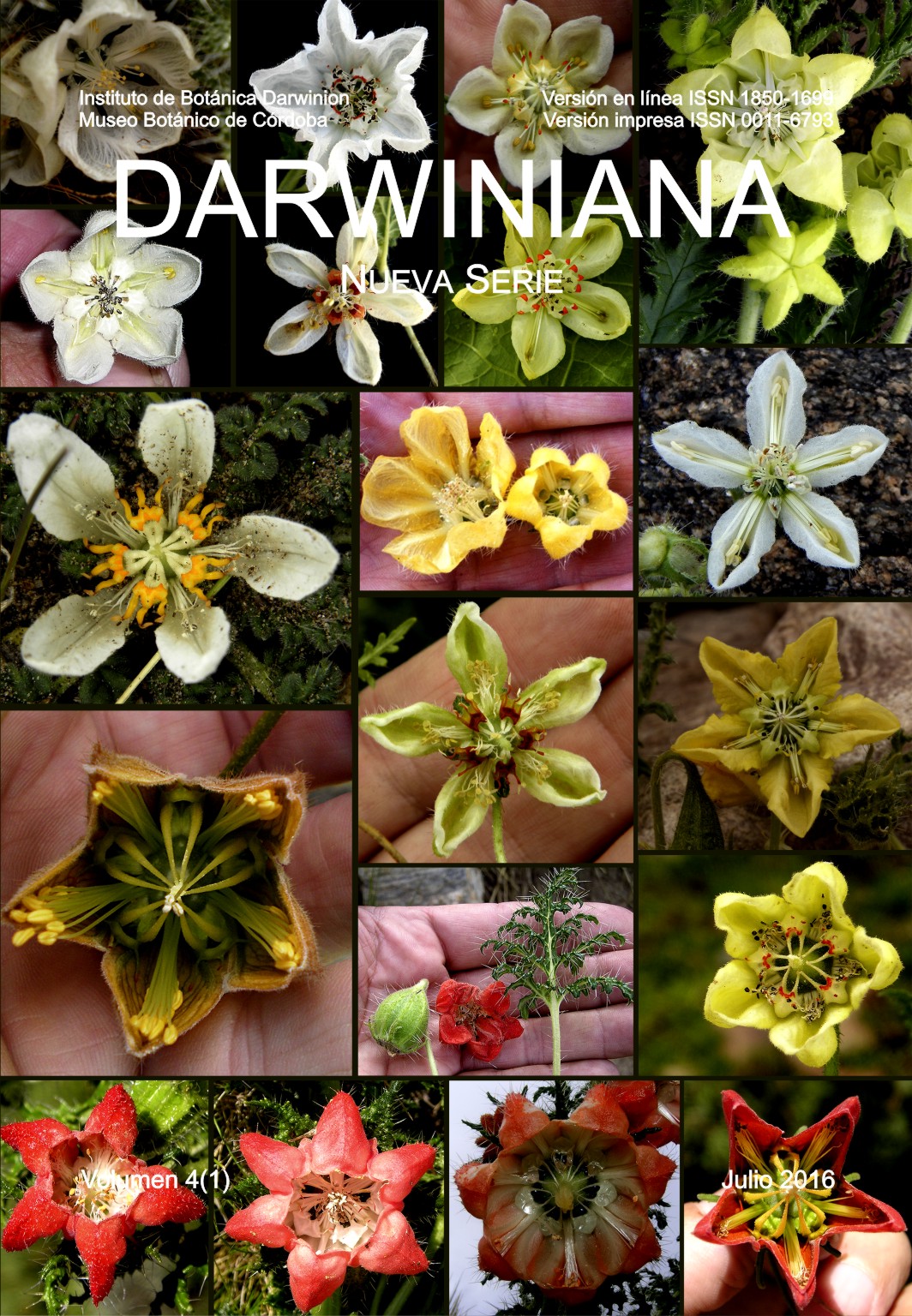Plant resources and alimentary practices among Tapiete indians in northeastern Salta province, Argentina
DOI:
https://doi.org/10.14522/darwiniana.2016.41.684Keywords:
Edible plants, ethnobotany, nutrition, semiarid Chaco.Abstract
Edible plant species and their parts used by indigenous tapiete people in northeastern Salta province, Argentina are identified, as well as their gathering, elaboration, consumption and storage practices. The ultimate aim of this work is to contribute to the recording and appreciation of tapiete people knowledge about this matter. Five fieldworks were made to the semiarid northern Chaco and to Tartagal city, where
ethnobotanical data were obtained from 75 interviews with a total of 32 qualified and occasional tapiete collaborators. Each of the edible plants was collected and identified by the authors and deposited at the Ruiz Leal Herbarium (MERL). A total of 54 native plants, belonging to 23 botanical families used as
food by the tapiete, are recorded as forming part of 106 preparations, or consumption forms, and 13 forms of conservation. The main edible species are Anisocapparis speciosa, Prosopis aff. elata and Prosopis alba with six applications each, and Ziziphus mistol, Geoffroea decorticans and Funastrum clausum with four applications each. Most of these applications (55%; 59) do not include any preparation
–they are consumed raw-, the 21% (22) are eaten cooked (boiled or roasted), while their use in beverages, condiment and flours represent a minority of their applications (24%; 25). Consumption of the leaves of Passiflora mooreana and P. cincinatta is registered here for the first time by ethnic groups
from the Gran Chaco.
Published
How to Cite
Issue
Section
License

Starting on 2012, Darwiniana Nueva Serie uses Licencia Creative Commons Atribución-NoComercial 2.5 Argentina .






